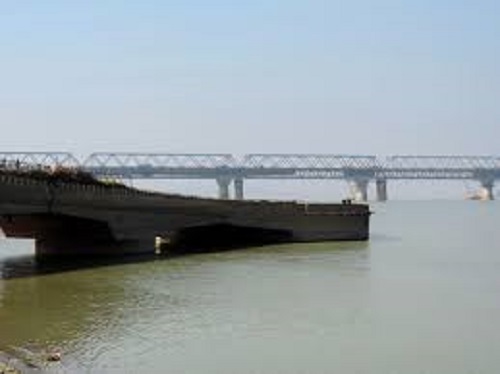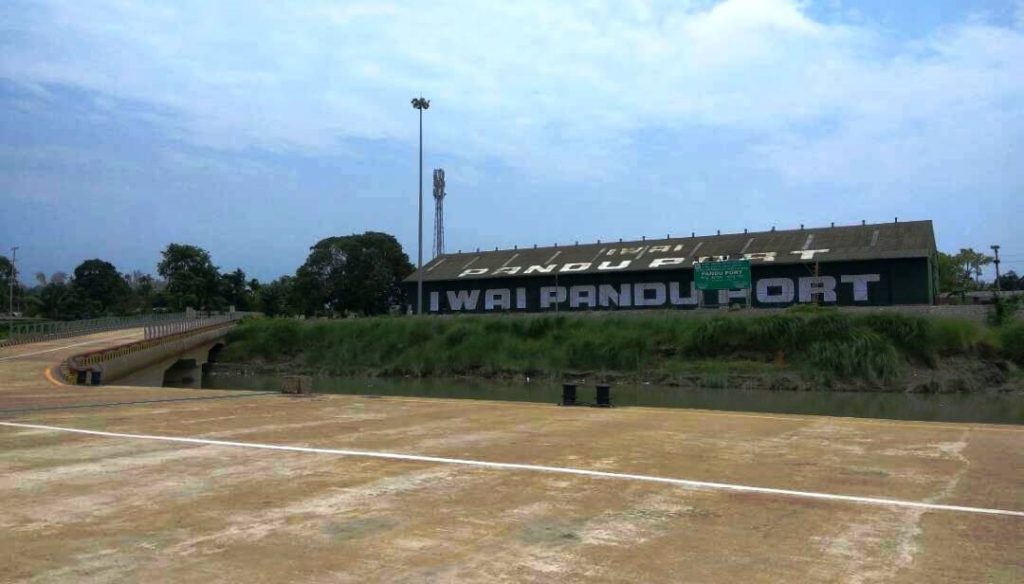
ALL AT SEA: Uncertainty Over National Waterway Project As Pandu Port Development Hits Contract Hurdles
Inland Waterways Authority of India has terminated the contract awarded to Mangalore-based firm citing incompetency, bringing a vital river transport project to a grinding halt.
Team NE
Work on developing the slipway for vessels at Guwahati’s Pandu Port has come to a grinding halt after the termination of the contract with the firm engaged in the project.
In reply to a query under the Right to Information Act (RTI), the Inland Waterways Authority of India (IWAI) said that the contract awarded to Mangalore-based Yojaka India (Pvt) Ltd was terminated owing to “contractual issues”.
“Incompetency” of the firm was cited as the reason for termination of the contract signed in 2016. The agreement stipulated that the project in Pandu would be completed within thirty-six months.
The reply also disclosed that Rs 3.17 lakh had been paid to the contractor out of a total of around Rs 50.75 crore that was earmarked for the slipway at Pandu.
The Pandu port is the biggest on the Brahmaputra which was declared as National Waterway 2 in 1988. IWAI claims that a navigable depth of 2.5 metres is being maintained along three stretches of the river from Sadiya to Dhubri.
Currently, the waterway is being used by vessels of Assam government, Border Security Force, and private operators for mainly tourism purposes. Over-dimensional cargo (ODC) is also transported through the waterway from occasionally between May and October.
IWAI has disclosed that 1661.7-metric tonne of cargo was despatched from the Pandu port between 2015 and 2020 (until August).

History of Navigation
Brahmaputra river has a history of navigation from ancient times. In 1839, the British-run Assam Company started its own fleet of country boats which was followed by the government’s launch of a steamer service between Kolkata and Guwahati in 1847.
The next milestone was in 1861 when the Indian General Steam Navigation Company started regular traffic on the river to transport labourers into Assam. Eight years later, the River Steam Navigation Company made a two-year agreement with the Jorhat Tea Company for carriage of its tea and stores at reduced rates.
In 1883, the Indian General Steam Navigation Company and the River Steam Navigation Company, aided by government subsidy, established a daily steamer service on the Brahmaputra, which could reach Dibrugarh from Goalundo in Bangladesh within a week.
Partition dealt a blow to navigation on the river. In 1949, barges on their way to Kolkata from Assam were held up in Pakistanterritory (now Bangladesh). The earthquake a year later changed the regime of the river which was the biggest setback to the river services in Assam. Apart from the border disputes of 1965, the most important factor adversely impactingriver transport was the opening of theSaraighatBridge in 1962 resulting in the improvement of road and rail transport in the state.
Why Develop National Waterway-2?
The government has firmed up ambitious plans to link Brahmaputra with the rivers in Bangladesh, which is also part of the scheme to link the Northeast with different destinations of Southeast Asia. However, the suspension of the work on the slipway at Pandu could certainly delay the implementation of the larger projects.
Inland water transport is environmentally friendly which assumes significance for the Northeast, a biodiversity hotspot.
Cargo transportation to the Northeast through the Sundarbans-Bangladesh-NW-2 water way system offers a shorter route than the rail and road networks. During the rainy season, when other modes of transport are restricted or crippled, water transport could be an effective link between the Northeast and the rest of the country enabling transport of essential commodities to the region.
Besides generation of employment avenues, the growth of inland waterway will contribute to the development of tourism circuits andboost improvements in infrastructure. Moving freight by inland waterway will reduce congestion on the roads and railways.
